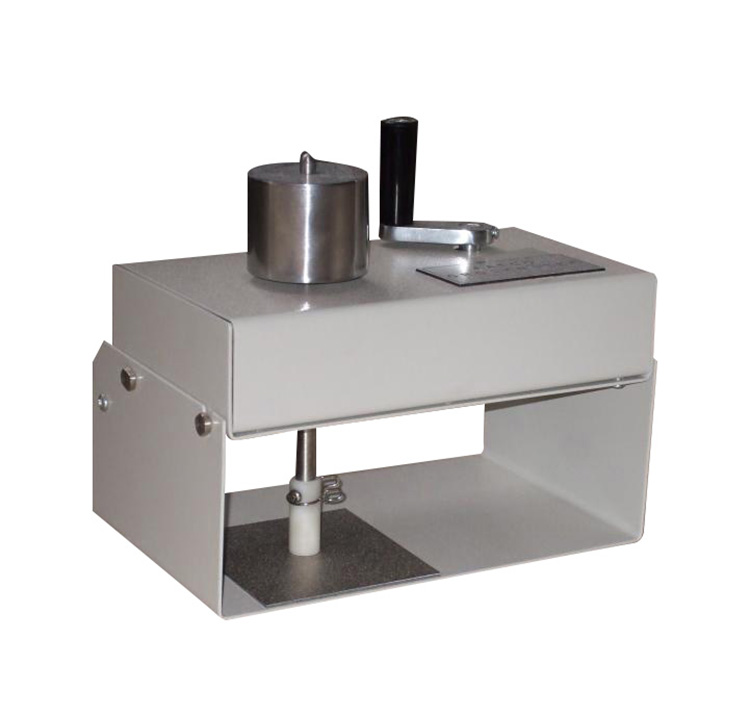Maintenance Methods for Rotary Friction Colorfastness Tester
The Rotary Friction Colorfastness Tester (If you need related products, please contact us. Shanghai Qianshi Precision Electromechanical Technology Co., Ltd. will provide you with high-quality instruments.) is a crucial piece of equipment in the field of textile testing, used to assess the color stability and friction resistance of textiles. To ensure the accuracy of test results and the long-term stable operation of the equipment, regular maintenance and servicing are indispensable. The following is a detailed discussion of the maintenance methods for the Rotary Friction Colorfastness Tester.
I. Cleaning and Preservation
Firstly, keeping the equipment clean is vital. During the testing process, textile fibers and impurities may remain on the test bench and friction head. Therefore, it is necessary to regularly clean these areas to ensure the accuracy of the tests and the normal operation of the equipment.
- Cleaning the Test Bench: Use a clean, soft cotton cloth or specialized cleaning solution to gently wipe the test bench, avoiding the use of harsh cleaners that may damage the equipment's surface.
- Cleaning the Friction Head: The friction head may accumulate fibers and impurities during use. It should be cleaned regularly with a soft brush or cotton cloth to prevent wear or unevenness on the surface, which could affect test results.
II. Mechanical Component Inspection
The stability and performance of mechanical components have a significant impact on test results. Therefore, regular inspection of the motor, drive belt, wheels, and other mechanical components is essential.
- Motor Inspection: Check for abnormal noises or overheating of the motor to ensure its normal operation.
- Drive System Inspection: Examine the wear of the drive belt and wheels to ensure they are not loose or worn. If abnormalities are found, they should be replaced or repaired promptly.
III. Electrical System Inspection
The stability and reliability of the electrical system are also crucial for the normal operation of the equipment.
- Power Cord Inspection: Ensure the power cord is tightly plugged in and not damaged, to avoid equipment malfunctions caused by power issues.
- Control System Inspection: Check whether the circuit boards, sensors, display screens, and other components in the control system are functioning normally. If any faults are found, they should be repaired promptly.
IV. Lubrication and Preservation
Lubrication is essential to maintain the smooth operation of the equipment.
- Lubrication of Sliding Components: Regularly lubricate the sliding components to ensure they have no friction resistance during movement and remain smooth.
- Preservation of Other Components: Depending on the equipment's usage, regularly maintain other components, such as replacing worn parts and tightening loose screws.
V. Calibration and Verification
Calibration is an important step to ensure the accuracy of test results.
- Regular Calibration: Regularly calibrate the tester to ensure the accuracy and reliability of its test results. During calibration, standard samples should be used for comparative testing.
- Verification Testing: Before conducting formal testing, a verification test should be performed to ensure the equipment is in normal working condition.
VI. Precautions
- Avoid Chemical Agents: During operation, do not spray chemical agents or liquids directly on the test samples or equipment to prevent damage to the instrument.
- Personal Protection: When operating the equipment, attention should be paid to personal safety and protection to avoid accidents.
- Power-off Preservation: When cleaning and maintaining, the power should be cut off first, and the equipment should be allowed to cool
The maintenance methods for the Rotary Friction Colorfastness Tester include cleaning and preservation, mechanical component inspection, electrical system inspection, lubrication and preservation, calibration and verification, as well as precautions. Only by regularly maintaining and servicing the equipment can its long-term stable operation and the accuracy of test results be ensured. Therefore, we should strictly adhere to the maintenance regulations to ensure the performance and safety of the equipment.

